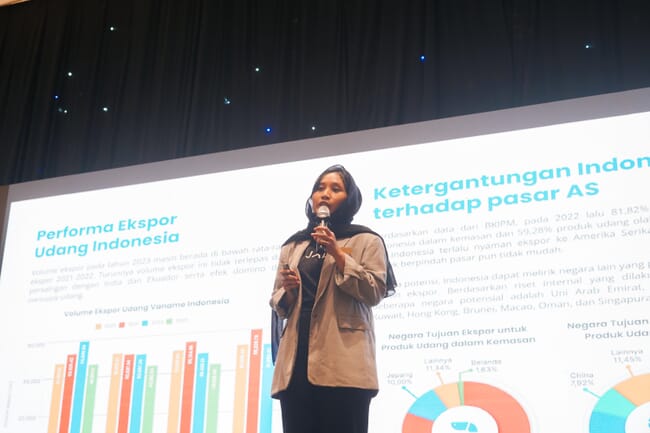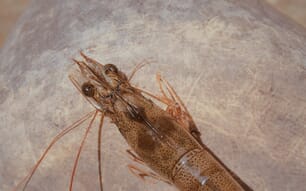
© JALA
Hosted by JALA, an aquaculture technology company providing shrimp farming solutions in Indonesia, the Shrimp Outlook 2024 event took place in Surabaya last Thursday, 7 March.
Bringing together 339 attendees from across the Indonesian shrimp industry, including shrimp farmers, processing companies, and fry and feed producers, the event discussed Indonesia’s latest shrimp cultivation performance and outlined takeaways for improved productivity in 2024.
During the main session, Liris Maduningtyas, co-founder and chief executive officer of JALA, delivered an in-depth evaluation of Indonesia’s shrimp industry performance in 2023, along with her insights for improved productivity in 2024. She stated, “The average productivity of shrimp farms is 12 tonnes per hectare. To aim for better profitability, farmers are advised to cultivate shrimp for 70-80 days or 100-110 days.”
Liris also emphasised the need to enhance local market absorption. This is crucial to safeguard local shrimp prices from significant fluctuations when the export market becomes unstable.
The event hosted panel discussion sessions, aiming to explore innovative methods through which farmers can expand their business.
During the first panel session, titled “The next level of farm financing”, George Samuel, advisor of Agro Bahari Nusantara - an Indonesian shrimp producer - and Susanto of BRI - one of the largest banks in Indonesia - discussed the importance of regular data recording and creating financial reports for farmers who want to apply for bank or equity funding.
“The panel discussion about the next level of farm financing was very inspiring, providing detailed insights for [those] who are about to dive into this industry,” said Jacky, a newly established shrimp farmer, according to a post-event release from JALA.
The second panel discussion explored one of the greatest challenges for Indonesia’s shrimp industry - the fluctuating global market. Delving into current shrimp market conditions, the panel discussed the increasing oversupply of shrimp in the global market and increasing competition from countries such as Ecuador and China. They encouraged efforts to increase the competitiveness of Indonesia’s shrimp, such as by providing value-added and cooked shrimp products to achieve better selling prices.
A third panel discussion tackled the topic of shrimp fry production, highlighting current challenges that need to be overcome in this sector of the industry. Representatives from leading shrimp fry producers, such as Emiliana Dhian of Suri Tani Pemuka and Henry Wijaya of Prima Larvae Bali took the stage and discussed how to overcome hurdles in fry production.
The event also saw the launch of the new JALA App, a shrimp farm management software platform, which aims to allow farmers to monitor pond conditions and carry out cultivation management with data-driven decision-making.
As the second successful installment to JALA’s annual event, Shrimp Outlook 2024 serves as the occasion to reflect on Indonesia’s shrimp farming performance over the last year, whilst planning for the future.




